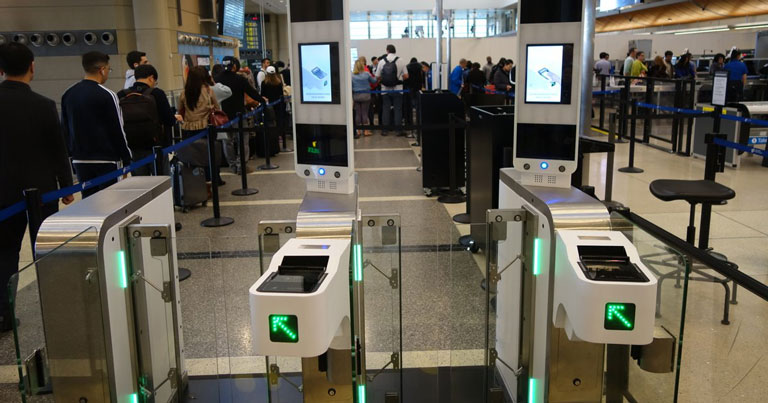
Los Angeles International Airport (LAX) has introduced two new security checkpoint technologies at Tom Bradley International Terminal (TBIT) in partnership with the Transportation Security Administration (TSA) to enhance security while improving the screening process for travellers.
The first pilot project being launched at the airport uses facial recognition technology to automate the identification and boarding pass verification process. Travellers who are ticketed on an international flight can choose whether to use the biometric recognition system to verify their identity.
After a traveller scans their boarding pass and passport, a camera activates and takes a photo of the passenger to verify that the name on the boarding pass and the photo taken by the camera match with the passenger’s travel documents. During the pilot programme, all travellers will have their boarding and identity documents manually verified by a TSA officer.
The second pilot project features an enhanced advanced imaging technology (AIT) unit with increased detection capabilities. The enhanced AIT does not require travellers to raise their hands over their head during the scan. In addition, it also provides corrective feedback to the TSA officer, alerting the officer if a passenger is improperly positioned in the unit. The capability may allow passengers to adjust their stance and be rescanned, which could reduce the need for further security checks.
“TSA’s strong partnership with Los Angeles World Airports (LAWA) has allowed the agency to pilot emerging technologies and evaluate their performance in real-time in a busy security checkpoint environment,” said Steve Karoly, Assistant Administrator – Acting, Office of Requirements and Capabilities Analysis at TSA. “We look forward to continuing this relationship to identify ways to increase the security effectiveness and efficiency of the passenger experience.”
Justin Erbacci, Chief Innovation and Commercial Strategy Officer, Los Angeles World Airports, also added: “Our selection as a TSA Innovation Task Force site gives LAWA the opportunity to see how these new products could help improve the guest experience at LAX. We are excited about the way these technologies can help smooth the journey for passengers using LAX, while enhancing security at the same time.”
Additionally, another technology that was tested and later installed at LAX is the automated screening lanes (ASLs). ASLs have several features designed to improve the screening of travellers’ carry-on baggage by automating many of those functions previously conducted manually.
Travellers are able to move more freely through the checkpoint thanks to side-by-side divesting areas where several passengers can place their items in bins simultaneously. Automated conveyor belts move the bins into the X-ray machine tunnel and return the bins to the front of the security checkpoint. The system features automatic diversion of any carry-on bag that may contain a prohibited item.
ASLs also feature bins that are 25% lighter than a typical bin and are able to hold a carry-on bag. Unique Radio Frequency Identification (RFID) tags are attached to each bin, allowing for additional accountability of a traveller’s carry-on bag as they move throughout the security screening process. The airport recently completed installation of four additional ASLs at TBIT, bringing the total number to 10 in the terminal’s security checkpoint.
TSA continues to collaborate with vendors, airlines, airports, and across the counter-terrorism community to roll out additional technologies. TSA’s long term goal is to incorporate enhanced capabilities at checkpoint lanes throughout the country.







